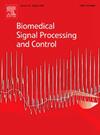GSC-ABTA: A group-level brain sources connectivity framework based on adaptive block tensor analysis
IF 4.9
2区 医学
Q1 ENGINEERING, BIOMEDICAL
引用次数: 0
Abstract
Background
This study presents a group analysis method for identifying shared brain connectivity patterns using tensor analysis. The method’s efficacy is evaluated through a validation framework, considering various scenarios of group brain data generation and diverse control parameters.
Methodology
The proposed group estimation method for source-level brain connectivity begins by modeling the activity of brain and noise sources using a quasi-real six-layer head model to solve the direct problem. Pseudo-EEG data are then generated at the group level for three scenarios: Volume Conduction Effect (VC), Inter-Trial Variability (ITV), and Time Varying Connectivity (TV). The Group-Level Source Connectivity based on Adaptive Block Tensor Analysis (GSC-ABTA) is used to solve the inverse problem and estimate group-level source activity. This method allows for trial-dependent streaming updates in the group estimation of brain sources. Finally, a tensorial multivariate autoregressive model is developed in an adaptive format, taking into account a forgetting parameter for determining the contribution of observations in estimating effective brain connectivity coefficients at the group level. Statistical analysis was performed for six control parameters (including data length, signal-to-noise ratio, density, percentage of real connections added to the model, model order, and the number of trials) and compared with tensorial and non-tensorial methods in the three proposed scenarios. Additionally, the framework was validated with real data.
Results
The proposed method outperforms other methods in the VC scenario for all control parameters and in the ITV and TV scenarios for most control parameters. These findings underscore the importance of adaptive updating in extracting the activity of the sources for group investigation, facilitating the group extraction of brain connectivity coefficients on a more generalizable scale.
GSC-ABTA:基于自适应块张量分析的群体级脑源连接框架
本研究提出了一种使用张量分析识别共享脑连接模式的组分析方法。该方法的有效性通过一个验证框架进行评估,考虑了群体大脑数据生成的各种场景和不同的控制参数。本文提出的源级脑连通性群体估计方法首先利用准真实六层头部模型对脑和噪声源的活动进行建模,以解决直接问题。然后在组水平上生成三种情况下的伪脑电图数据:体积传导效应(VC)、试验间变异性(ITV)和时变连接(TV)。采用基于自适应块张量分析(GSC-ABTA)的组级信源连通性来求解反问题并估计组级信源活动。这种方法允许在脑源的组估计中进行依赖于试验的流更新。最后,以自适应格式开发了一个张量多元自回归模型,该模型考虑了遗忘参数,用于确定观察值对估计组水平有效脑连接系数的贡献。统计分析了六个控制参数(包括数据长度、信噪比、密度、添加到模型中的真实连接百分比、模型顺序和试验次数),并比较了三种方案中的张量和非张量方法。并用实际数据对该框架进行了验证。结果该方法在VC场景下的所有控制参数优于其他方法,在ITV和TV场景下的大多数控制参数优于其他方法。这些发现强调了自适应更新在提取群体调查来源活动中的重要性,促进了在更普遍的尺度上提取大脑连接系数的群体。
本文章由计算机程序翻译,如有差异,请以英文原文为准。
求助全文
约1分钟内获得全文
求助全文
来源期刊

Biomedical Signal Processing and Control
工程技术-工程:生物医学
CiteScore
9.80
自引率
13.70%
发文量
822
审稿时长
4 months
期刊介绍:
Biomedical Signal Processing and Control aims to provide a cross-disciplinary international forum for the interchange of information on research in the measurement and analysis of signals and images in clinical medicine and the biological sciences. Emphasis is placed on contributions dealing with the practical, applications-led research on the use of methods and devices in clinical diagnosis, patient monitoring and management.
Biomedical Signal Processing and Control reflects the main areas in which these methods are being used and developed at the interface of both engineering and clinical science. The scope of the journal is defined to include relevant review papers, technical notes, short communications and letters. Tutorial papers and special issues will also be published.
 求助内容:
求助内容: 应助结果提醒方式:
应助结果提醒方式:


